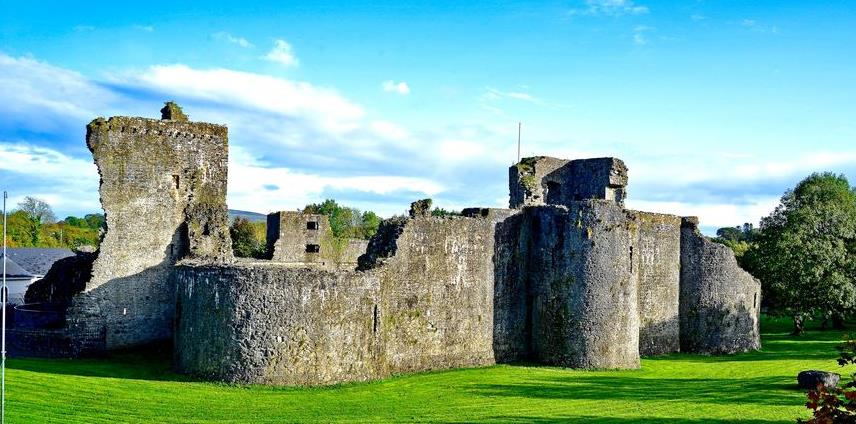Nestled in the charming landscape of County Sligo in northwest Ireland, Ballymote Castle stands as a silent witness to the tumultuous past and rich history of the region. Constructed by the Norman Lord, Richard de Burgh, in the 13th century, Ballymote Castle is among the last and largest bastions of its era.

The castle, built from limestone, showcases typical Norman military architecture. The formidable exterior is a pentagonal ring-wall fortification flanked by rounded corner towers, a gatehouse, and a central keep. It is a testament to the strategic mastery and architectural prowess of its constructors. In its prime, Ballymote was reputedly impregnable, exuding the might and influence of the Norman lords.
Ballymote Castle has had a varied and vibrant history, changing hands several times between Gaelic clans and English forces. The castle played pivotal roles in numerous Irish battles, notably the Second Desmond Rebellion and the Nine Years War, marking its corridors and towers with the echoes of clashing swords and war cries. In 1317, it was captured by the O’Donnell and O’Brien clans, marking one of the numerous times it would shift between Irish and English control.
Aside from its martial legacy, Ballymote Castle is also closely associated with one of Ireland’s most significant historical artifacts – the Book of Ballymote. This 14th-century manuscript, commissioned by a MacDermott of the time, contains key texts of Irish literature, including the earliest known version of the Lebor Gabála Érenn (Book of the Taking of Ireland) and a translation of the Illiad and the Odyssey into Irish.
In the 17th century, the castle was finally abandoned, and over time, it fell into ruin. Despite this, the castle’s imposing silhouette against the rural backdrop of Ballymote still captivates visitors and historians alike. The castle grounds are currently maintained by the Irish Office of Public Works and are open to the public, offering a compelling window into Ireland’s past.
Today, as one steps through the archways of Ballymote Castle, one can almost hear the whispers of Norman knights and Gaelic warriors, the echoes of ancient scholars penning sagas and epic poems. The castle stands not merely as a relic of the past, but as a vibrant part of Ireland’s cultural tapestry, its weathered stones still narrating tales of courage, ambition, and the enduring spirit of the Irish nation.
Comments are closed.